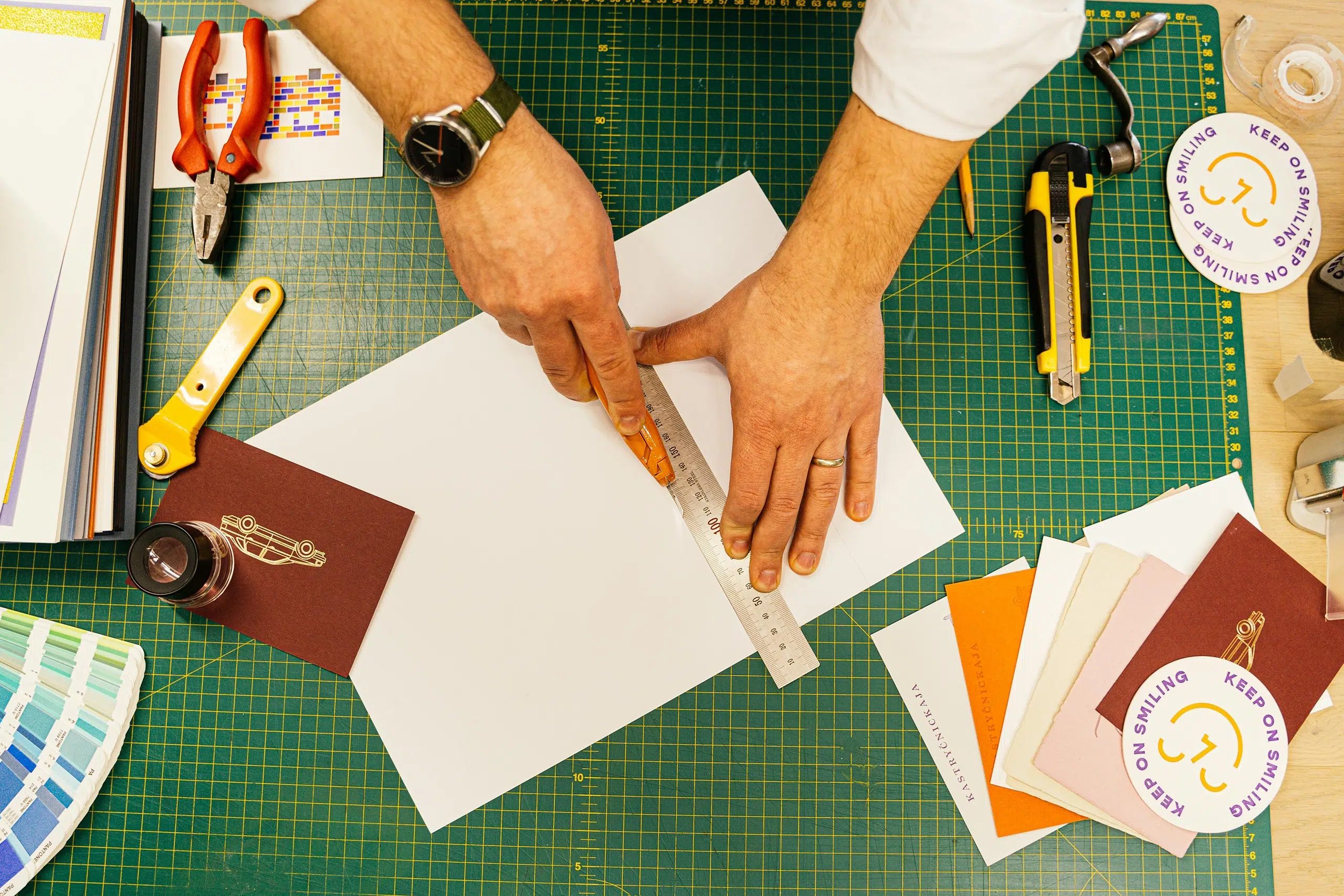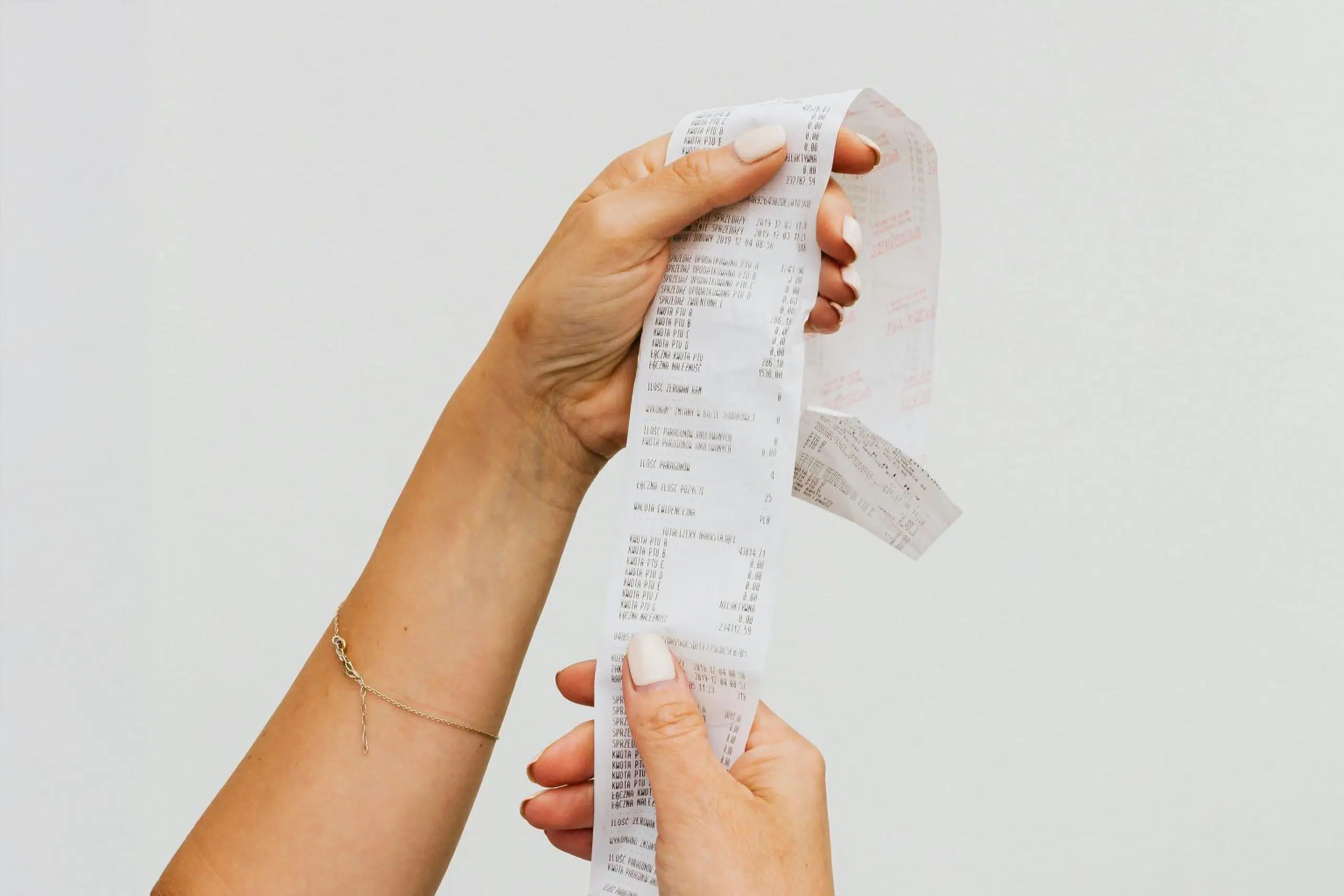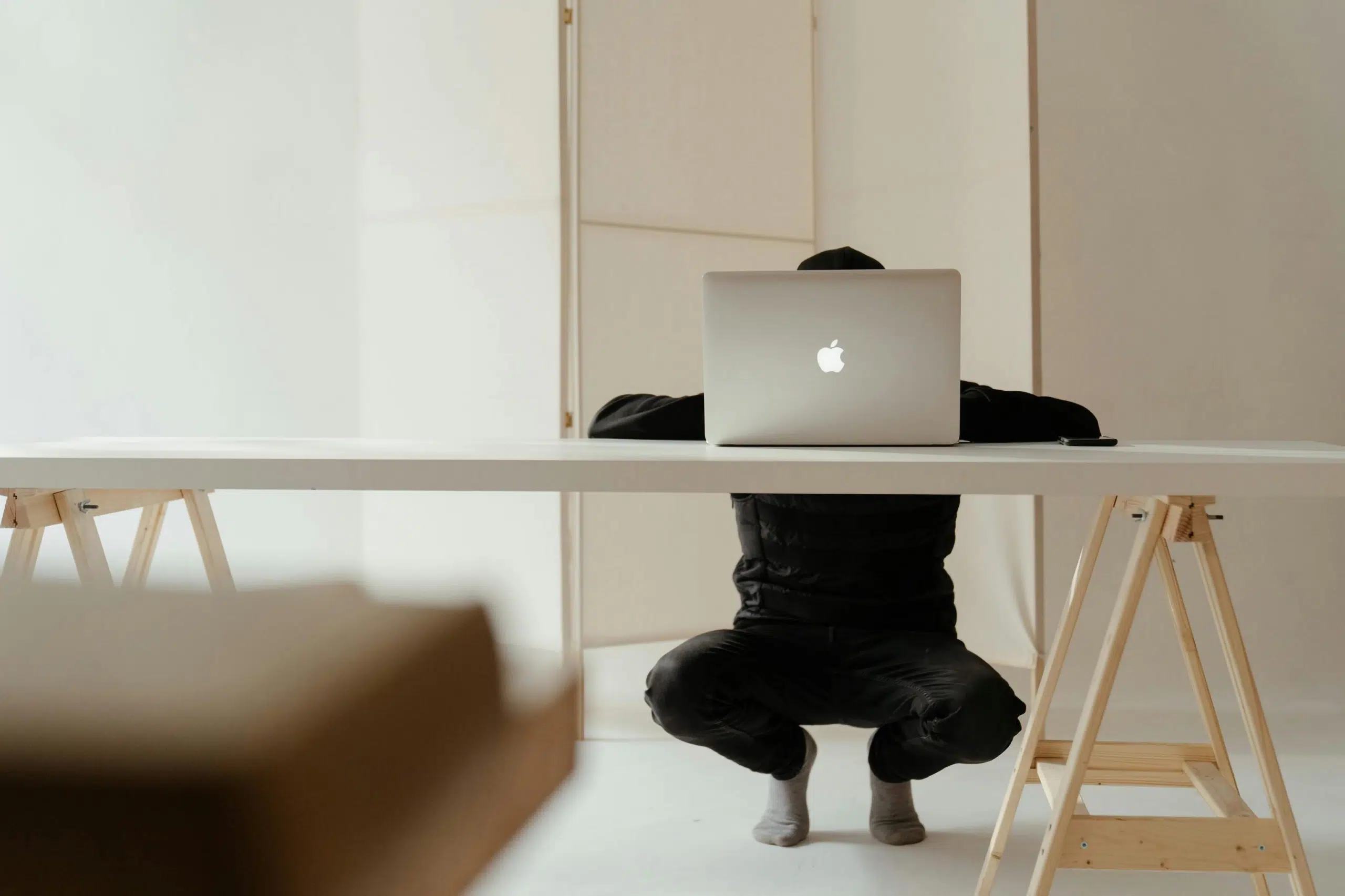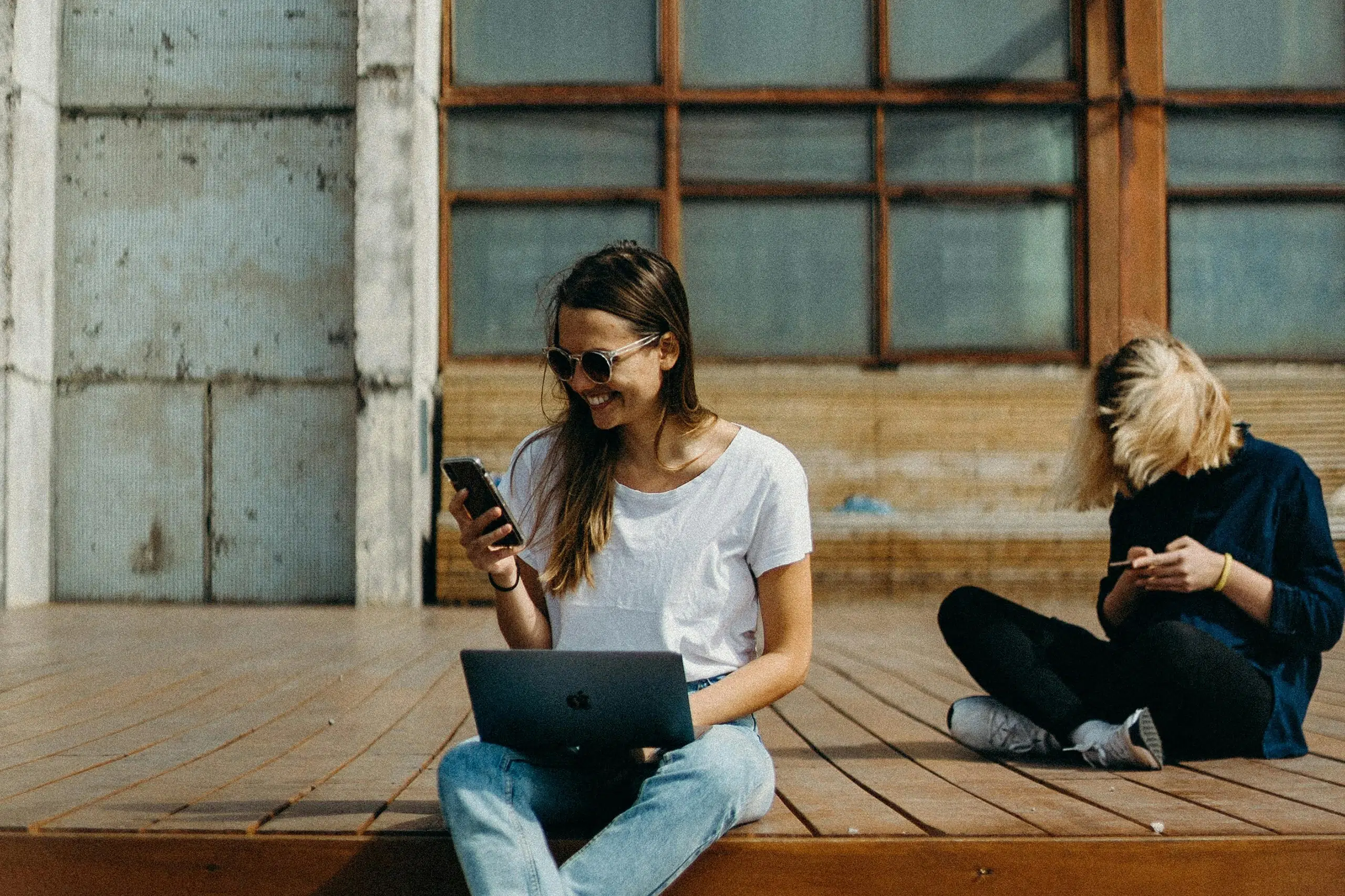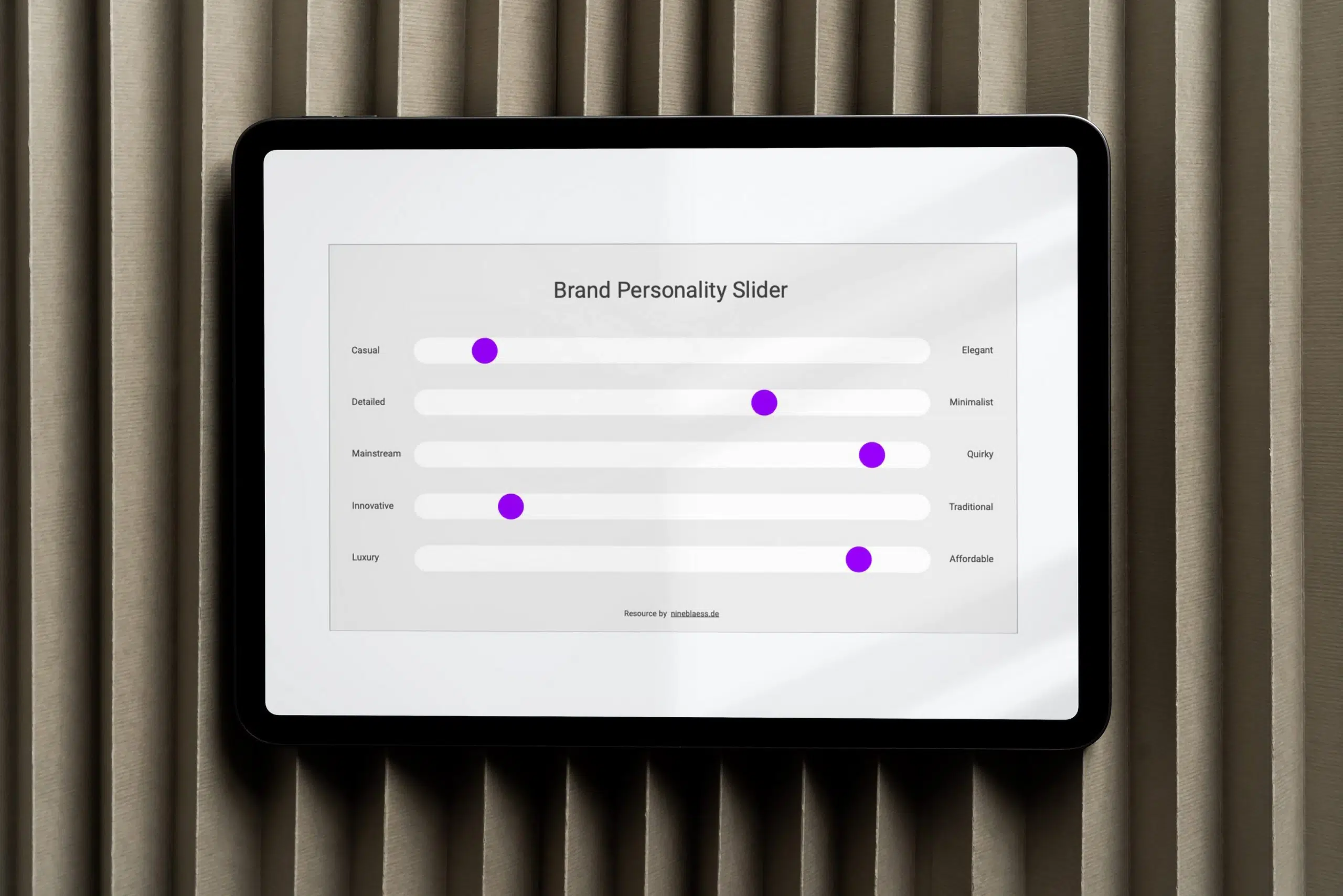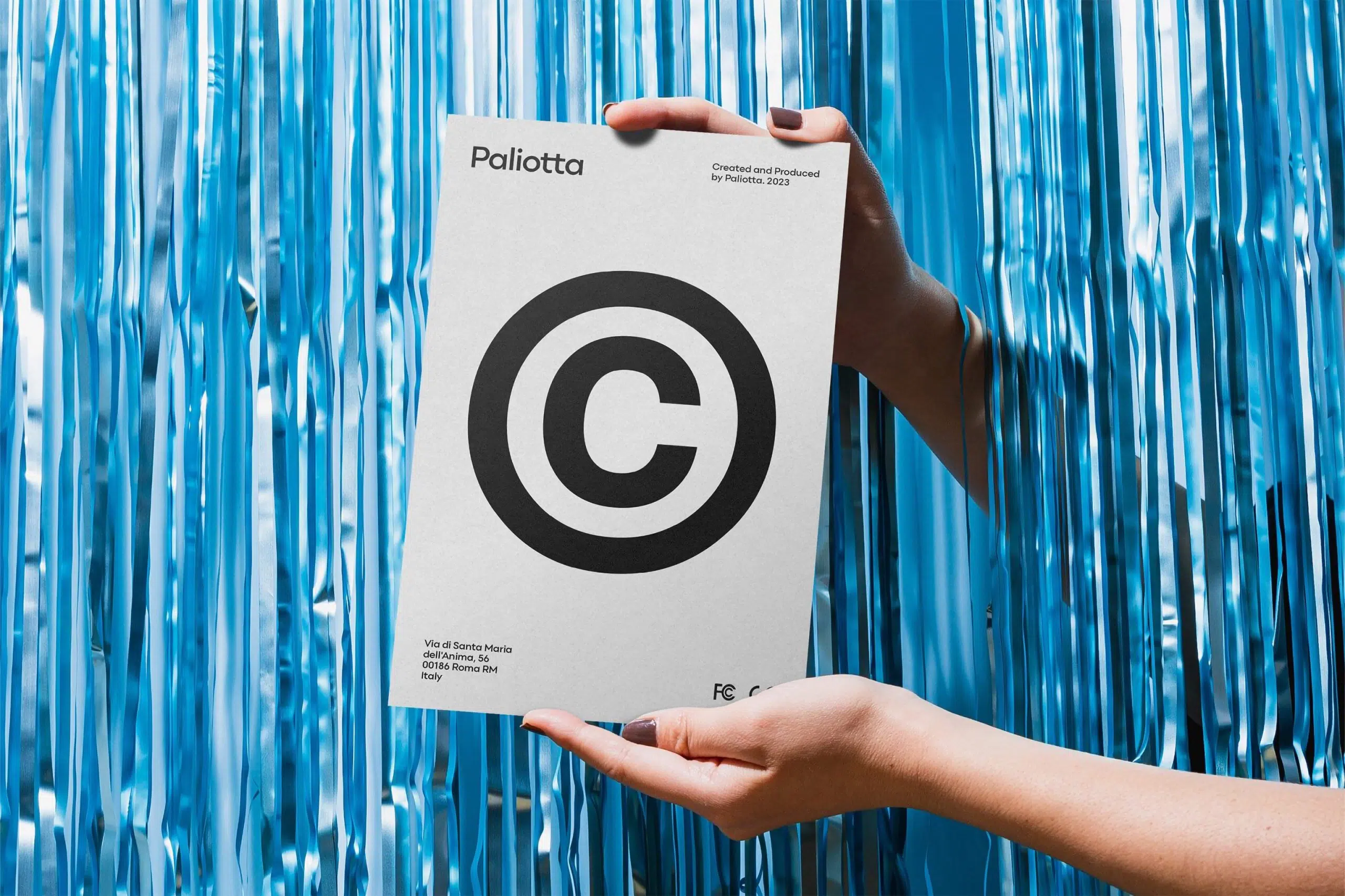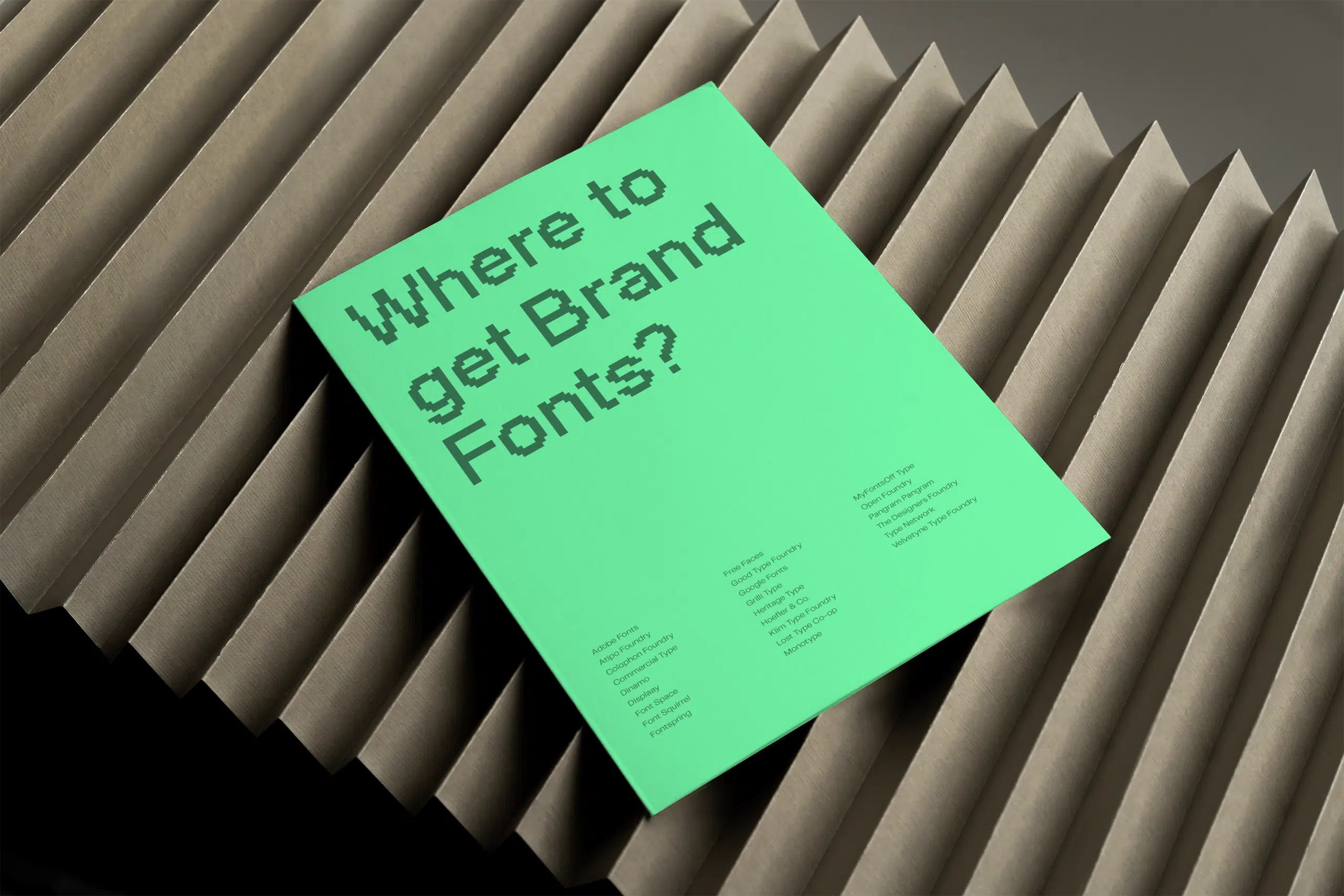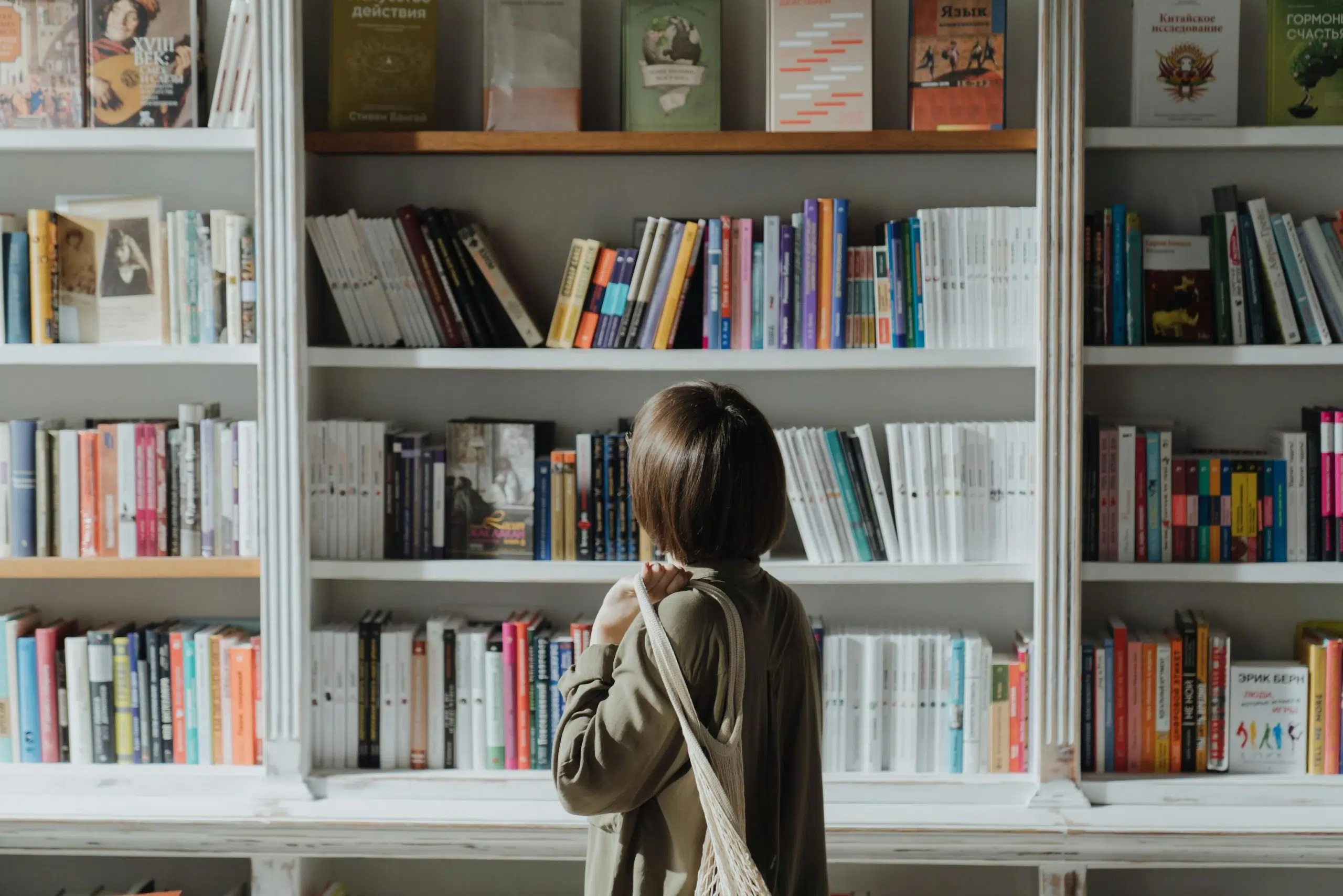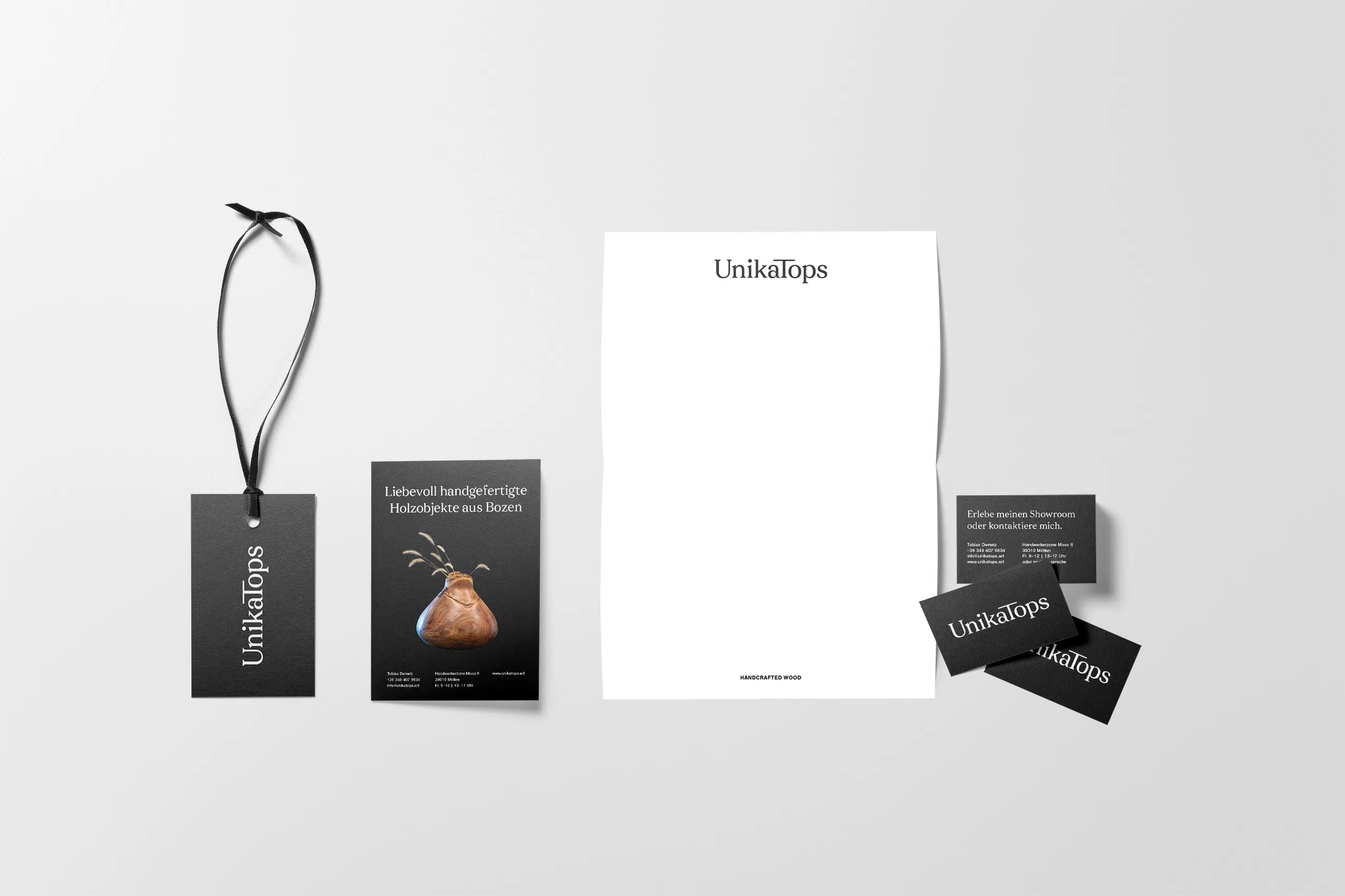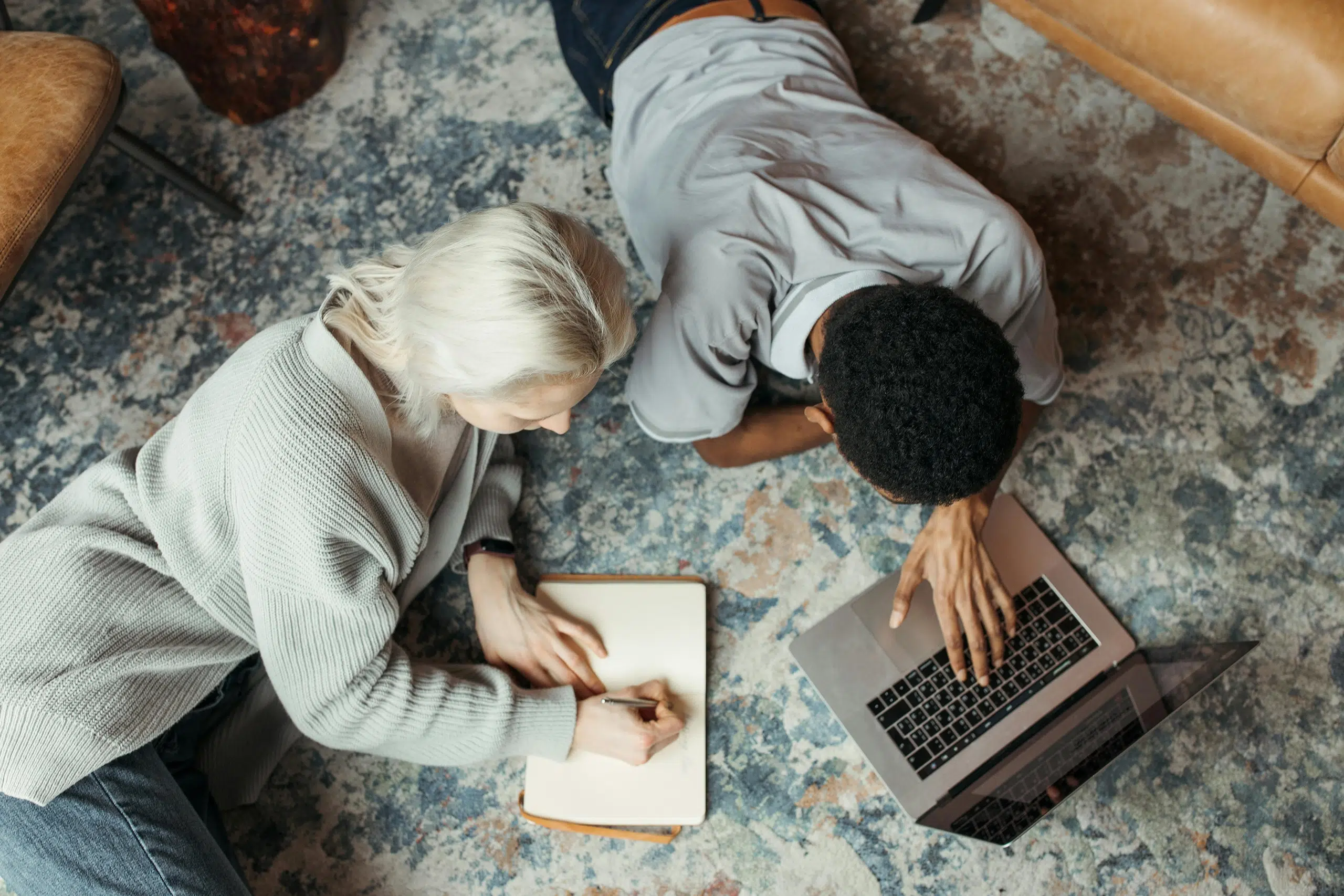In this article, I’ve compiled 25 cognitive biases—each with real-world examples—to help you understand why consumers (and us humans in general) often make seemingly illogical choices.
But first, let’s quickly break down what a cognitive bias actually is—and why it happens.
What is a cognitive bias?
A cognitive bias is an unconscious error in thinking. It happens because your brain is constantly trying to interpret a complex world quickly and with minimal effort.
While this mental shortcutting helps you navigate daily life, it also means you sometimes misjudge information, leading to decisions that are less rational than you might expect.
Understanding these biases isn’t just fascinating—it can make you a sharper marketer, entrepreneur, or brand builder.
Ready to dive in? Then let’s explore 25 cognitive biases.
25 Cognitive biases explained
1. Action Bias
When faced with uncertainty, we often feel compelled to do something—even if that action doesn’t actually help. Taking action creates a comforting sense of control.
In branding and business, action bias can lead you to panic-launch a new product, rebrand too soon, or change strategy at the first sign of trouble. But sometimes, the smartest move is to pause, gather data, and make a deliberate decision.
Example
In soccer, goalkeepers often dive to the left or right during penalty kicks—even though statistically, they’d save more goals by staying in the middle.[1]
Standing still feels wrong, so they act, even when it’s not the smartest move. It’s a clear case of action bias.
2. Ambiguity Effect
When details are vague, people tend to avoid making decisions.
In marketing, if your website or product descriptions leave questions unanswered—like unclear pricing or vague shipping policies—potential customers are likely to abandon their carts.
Example
A Cornell University study found that restaurant menu items with descriptive labels were 27% more likely to be ordered. Clear, detailed information builds trust—and reduces uncertainty.
3. Anchoring Bias
We often rely heavily on the first piece of information we encounter about a topic. This is known as anchoring bias—our tendency to place too much weight on initial information when making decisions.
For example, if a T-shirt is discounted from $100 to $60, the original price acts as an anchor, making $60 seem like a good deal, even though it’s still overpriced.
Example
Car salesmen often use this trick: they show you an expensive model first to make the next option seem like a bargain.
4. Authority Bias
Why do we believe authority figures so easily? It’s a fact, we instinctively trust experts, leaders, and professionals—even without verifying their claims.
So, in branding, partnering with respected experts or gaining endorsements can skyrocket your credibility.
Example
Lucky Strike famously used the image of a doctor in its ads to promote its cigarettes, capitalising on authority bias. This association made the product seem safer and more trustworthy at the time—even though we know better today!
5. Availability Heuristic
We rely on the information we see and hear the most. If an issue is in the news, we’re more likely to remember it, which can make us think it’s more important or urgent than it really is—like climate change for example, which seems to have gotten less urgent with the news about war spreading.
This can also affect how customers view your brand. If it’s talked about a lot, customers may think it’s more important or relevant just because they see it so often.
Example
After major plane crashes, people often overestimate the risk of flying. In fact, air travel is far safer than car travel. According to the National Safety Council, the odds of dying in a motor vehicle crash are 1 in 95, while in 2023 the odds of dying in a plane crash were too small to calculate.
6. Bandwagon Effect
Have you ever wondered why trends catch on?
We often adopt beliefs or behaviours simply because everyone else is doing it.
In business, showcasing popularity—like customer testimonials, waitlists, or sold-out products—can leverage the bandwagon effect to boost trust and sales.
Example
The bandwagon effect even influences political elections. Voters are drawn to candidates or parties they perceive as popular and likely to win, rather than independently evaluating policies or platforms.
7. Base Rate Neglect
Vivid stories override cold, hard facts. We often overlook general statistical data (base rates) in favour of more specific or vivid information when making decisions.
In branding, this bias shows up when brands focus more on telling compelling brand stories rather than just listing data and features. Stories connect emotionally. They are memorable. And they stick far longer than a statistic ever could.
Example
Here’s a classic thought experiment by Daniel Kahneman:
“Linda is thirty-one years old, single, outspoken, and very bright. She majored in philosophy. As a student, she was deeply concerned with issues of discrimination and social justice and participated in anti-nuclear demonstrations. Which alternative is more probable?
- Linda is a bank teller.
- Linda is a bank teller and is active in the feminist movement.”
You might think the second option is more likely because it fits with the image you’ve formed of Linda.
But statistically, the first option is much more probable. This is an example of base rate neglect, where specific details cloud our understanding of the general probability.[2]
8. Cognitive Dissonance
Why is it so hard to change our minds?
The reason is that we feel uncomfortable when new information contradicts our beliefs, values or attitudes. To avoid this tension, we may often, ignore or rationalise away conflicting information.
In business, cognitive dissonance can occur when a brand introduces a change that conflicts with customer expectations or past experiences.
For example, if a luxury brand suddenly starts selling lower-priced items, customers may feel uncomfortable and question the brand’s authenticity.
To avoid alienating customers, brands should introduce changes gradually and communicate them clearly.
Example
A study found that Israeli Jews were less favourable towards a peace plan when it was credited to the Palestinians than when it was credited to their government.
9. Confirmation Bias
We seek out information that matches our beliefs because we love information that proves us right—and tend to ignore anything that challenges our views.
In business and branding, for example, confirmation bias can lead brands to focus only on feedback that aligns with their current strategy and ignore constructive criticism. This can lead to missed opportunities for growth.
Example
Maybe we like social media so much because it shows us what we want to see.
Social media algorithms learn what users like. They then offer corresponding information, making the user stay on the platform longer. However, this also draws the user into a spiral of the same ideas, a so-called echo chamber.
10. Decoy Effect
You’ve probably noticed it: whether it’s a software subscription, a coffee, or a service package, companies almost always offer three price tier options. But why?
It’s not random—it’s psychology. Specifically, it taps into something called the decoy effect.
When brands add a third option, they’re not just offering more choice—they’re shaping your decision.
The decoy is designed to be less attractive than one option, but better than the cheapest, so that the middle (or higher-priced) choice feels like the smartest choice.
This is why you’ll often see a basic, a premium and a “best value” middle tier in pricing strategies. It encourages customers to spend more while making them feel like they’re in control.
Example
A famous example comes from the psychologist and behavioural economist Dan Ariely. For The Economist magazine, he came up with three subscription options:
One-year subscription to Economist.com (full access to all online articles), US $59.00
One-year subscription to The Economist print edition, US $125.00 (decoy)
Print and web subscription, US $125.00
Introducing the decoy option led 84% of subscribers to choose option three, compared to 32% when no decoy was given.[3]
11. Empathy Gap
We often underestimate how much our emotions influence our judgements and decisions, making it hard to understand how others feel and see things, especially when they’re in a different emotional state to us.
In branding and business, this bias can affect how a company connects with its customers. For example, if a brand fails to understand the emotional needs of its target audience, its messaging may be ineffective, leading to disengagement.
Example
The Empathy Gap also explains why we struggle to recognise that someone does not feel the same way about us as we do about them.
12. Endowment Effect
Why do we overcharge when we sell our own things? Because ownership makes us feel something is worth more than it really is—a bias called the endowment effect.
In branding and business, this can show up when entrepreneurs price products based on emotional attachment rather than real market demand. It’s a common trap: loving what you’ve created a little too much.
Interestingly, research shows this bias is stronger in individualistic cultures like the West, where self-enhancement is more common, compared to collectivistic cultures like those in East Asia.
Example
In an experiment, students received a free mug and later got the chance to sell it. Others received no gift and were later asked how much they would spend on a mug.
A mug-owner valued the item twice as much as someone who hadn’t received the gift.[2]
13. Framing Effect
How information is framed shapes how we see it—that’s the framing effect.
In branding and business, smart framing can make products more appealing by highlighting positive features. For instance, would you rather buy juice that’s 90% natural or 10% artificial?
Example
Guinness faced a challenge: its beer took longer to pour than others. Instead of treating this as a problem, the brand turned it into an advantage.
Through the ‘Good things come to those who wait’ campaign, Guinness reframed the wait as a mark of quality — making the experience memorable and deepening its connection with customers.[4]
14. Halo Effect
The Halo Effect makes us assume that if someone excels in one area, they must also be good in others. This bias often shapes our judgments about people and things, even without any real evidence.
Example
A study shows that the perceived cost of a product is influenced by its appearance, particularly how attractive and high-quality it is perceived to be.
Those who care more about design tend to base their price expectations more on the product’s perceived attractiveness.
Would you like to find out more about this cognitive bias? I have written a comprehensive article about how you can use the Halo Effect in branding and marketing.
15. IKEA Effect
Why do we value things more when we’ve made them ourselves?
The IKEA effect shows that we place higher value on things we’ve put effort into creating, even if they aren’t objectively better.
In business, you can tap into this by encouraging customers to engage with your product or service, making them feel personally invested—just like IKEA does when it asks its customers to out together their furniture. This emotional connection can boost perceived value and build loyalty.
Example
Dan Ariely points out that parents tend to value their own children more than others do because of the time and energy they’ve invested in them.
Similarly, people often feel a stronger attachment to things they’ve built themselves—like IKEA furniture.
16. Loss Aversion
Why does losing $100 feel worse than gaining the same amount? Because tend to feel the pain of loss more intensely than the pleasure of gain.
In fact, the emotional impact of a loss is roughly twice as strong as the joy of a gain.
In business, you can use this insight to design experiences that minimise perceived loss. For example, offer gradual price increases or frame offers as opportunities to gain rather than lose.
Example
The economists Richard Thaler and Shlomo Benartzi developed the ‘Save More Tomorrow‘ pension model.
Instead of paying a certain amount into their pension fund monthly, people sign up to pay a percentage of future pay rises—say, 20% of a $500 pay rise. This way, it never feels like losing money.[3]
17. Mere Exposure Effect
Why do things grow on us?
The more we encounter something, the more familiar it becomes and the more likely we are to like it.
In branding and marketing, this principle is used to build brand loyalty.
Regular exposure to a brand’s assets, ads and content can make it more appealing over time, increasing the likelihood that customers will choose it simply because they are more familiar with it.
Example
Robert Zajonc conducted an experiment where participants read foreign words aloud multiple times.
He found that the more often the words were read, the more they were liked by participants, demonstrating how familiarity breeds preference.
18. Noble Edge Effect
Why do we love brands like Patagonia so much? The reason might be the Noble Edge effect.
It suggests that brands (or people) with strong moral and ethical values are viewed more positively, making consumers more likely to choose them over others.
Brands focusing on sustainability or ethical practices, like Patagonia with its environmental activism, build stronger customer loyalty by resonating with socially conscious consumers.
Example
In the wine-tasting experiment, participants who knew about the winery’s charitable donations rated the wine higher, suggesting that the brand’s moral and social values positively influenced their perception, regardless of the actual product quality.
19. Paradox of Choice
Why is it so hard to make a decision when we have too many options? According to the paradox of choice, having too many choices can actually make it harder to make decisions because it can lead to stress, dissatisfaction and regret about our choices.
So, when brands present too many options, customers may feel overwhelmed and end up dissatisfied with their choice—or do not choose at all.
Example
A study points out that an average American supermarket carries over 30,000 items, with more than 20,000 new products hitting the shelves every year.
Despite having so many choices, this abundance can reduce well-being, as more options lead to more pressure and less satisfaction. Can you relate?
20. Peak-End Rule
A negative ending often overshadows an otherwise nice experience.
Because when we evaluate an experience, we tend to overrate our feelings at the peak (the most intense moment) and at the end of the experience, regardless of whether those feelings are positive or negative. This is known as the peak-end rule.
Example
Researchers found that colonoscopies were remembered as less painful when doctors extended them by a few minutes and made those extra minutes a little less painful.
21. Primacy Effect
Why do we remember the first few items on our shopping list?
This is due to the primacy effect, which suggests that we tend to remember the first few items or pieces of information better than what comes after. Our brains give more attention and weight to the information presented first, making it easier to remember.
The Primacy Effect is key to branding. First impressions of a brand can have a lasting impact, so brands should focus on making a strong first impression—whether it’s through an engaging website, an eye-catching ad, or a memorable logo. The first few interactions are likely to shape how customers remember and perceive the brand in the long term.
Example
First impressions at a job interview count disproportionately. A survey by Simply Hired showed that 93% of hiring managers viewed arriving late for an interview as highly unfavourable.
22. Priming Effect
Why do we think ‘yellow’ when we hear ‘lemon’ This happens due to the priming effect, where exposure to one stimulus influences how we respond to a subsequent, related stimulus.
When we hear the word “lemon,” our brain is “primed” to think of related concepts, like the colour yellow, the tangy taste, or its visual appearance. The initial cue (lemon) triggers a series of associated thoughts.
Branding can trigger specific feelings and behaviours in people due to these associations.
Example
A study by Boston College found that video gamers who used Red Bull-branded race cars in a game displayed more aggressive and risk-taking behaviours. This shows how powerful branding can be in influencing our actions based on built-in associations.
23. Recency Effect
Due to the recency effect, we remember the most recent information we were given better than other information. That’s because the most recent information is still fresh in our minds when we’re asked to recall it.
The recency effect can help companies shape their messages. The last interaction a customer has with a brand—whether it’s the last part of an ad or the last sentence of a sales pitch—can have a lasting impact.
Brands can capitalise on this by ensuring that their key messages or calls to action are placed at the end of their communications, making them more likely to be remembered and acted upon.
Example
The recency effect is also the reason why summarising is useful for learning.
24. Salience Bias
Why do we find it so hard to resist things sometines? It’s because of salience bias: we focus on what’s most noticeable at that moment.
When we see a cake, for example, its rich smell, creamy icing and instant pleasure can grab our attention and we forget about the calories or long-term effects.
Salience bias also plays a role in how consumers make decisions.
Brands that emphasise the most striking features of their products, such as high-end design or bold promises, are more likely to grab attention and influence purchasing decisions.
Example
Research shows that people enjoy the immediate comfort of a warm shower, but rarely think about the energy and water consumption.
25. Spotlight Effect
Why do we tend to think the world revolves around us?
That can be distributed to the spotlight effect. We tend to overestimate how much other people notice us. But the truth is that most people are too busy thinking about their own lives to pay much attention to ours.
The spotlight effect shows up in branding, too. Brands often worry that every tiny flaw will be spotted and criticised. But, in reality, consumers are far less critical than you might expect. So stop overthinking the details—they’re not getting as much attention as you think.
Example
An experiment asked people to wear an embarrassing Barry Manilow T-shirt.
The T-shirt wearers predicted that about half the people who saw them would notice the T-shirt. But in reality, only about a quarter did.
How to overcome cognitive biases
I hope you found my breakdown of these 25 cognitive biases helpful.
You might be wondering: How can you protect yourself against these biases and make more rational decisions as a consumer, not business owner?
Here are some thoughts:
- Acknowledge that cognitive biases affect you, too. And remember, they often exist to help you.
- Research different perspectives to build a more balanced view.
Reflect regularly on your thoughts and decisions. Question your assumptions and weigh up alternatives. - Pause before acting. Taking your time often leads to better choices.
Last words
If you’re building a brand or crafting marketing messages, you can tap into cognitive biases to connect more deeply with your audience.
The key is to use them thoughtfully and ethically, focusing on building trust, loyalty, and lasting relationships.
So when you’re designing a campaign, writing copy, designing brand collateral or planning your brand messaging, keep these 25 cognitive biases in mind.
Used responsibly, they can become powerful tools for creating a brand that resonates.
If you have any questions, feedback, or great examples to share, I’d love to hear from you!
In the meantime, you might enjoy these articles:
References
[1] Bar-Eli, M., Azar, O. H., Ritov, I., Keidar-Levin, Y., & Schein, G. (2007). Action bias among elite soccer goalkeepers: The case of penalty kicks. Journal of Economic Psychology, 28 (5), 606-621.
[2] Daniel Kahneman (2012). Thinking, Fast and Slow. Penguin Books Ltd
[3] Rory Sutherland (2019). Alchemy: The Surprising Power of Ideas That Don’t Make Sense. Penguin Random House
[4] Martin Lindstrom (2008). Buyology: Truth and Lies About Why We Buy. Crown Business
Title image by cottonbro studio





